Lamkhaga Pass Trek | Full Details, Cost, Itinerary, Tips
Region: Uttarakhand
Base Camp: Harsil
Days: 10
Altitude: 17,700 ft
Grade: Difficult
Distance: 70 km
Min Age: 18 Years+
Best Season: May – June
Trek Description
Lamkhaga Pass serves as a thrilling bridge, connecting the scenic Harshil valley in Uttarakhand to the charming village of Chitkul in Kinnaur, Himachal Pradesh. What makes this journey exceptional is its transition from one state to another, beginning in Uttarakhand and culminating in Himachal Pradesh. The rugged terrain, though breathtaking, is classified as a difficult trek, reserved for those who possess both physical fitness and prior trekking experience.
Our adventure commences in Dehradun, where we embark on a 230-kilometer drive to reach Harshil Valley. This valley is renowned for its spiritual significance, housing the revered Gangotri Dham, one of the sacred Char Dhams.
Beyond its spiritual allure, Harshil is adorned with apple orchards, adding a fruity charm to its landscape. The route to Lamkhaga Pass spans a considerable 480 kilometers on the road, but the trekking distance is condensed to 90 kilometers, making this journey an immersive experience.
As we depart from the captivating Harshil Valley, the trek unveils its splendor, ascending towards the heart of adventure. The trail takes us through Kyarkoti, serving as the base camp for the renowned Black Peak Expedition. The journey continues, leading us through an array of landscapes—moraines, sharp ascents, glaciers, boulders, and ultimately, the formidable Lamkhaga Pass, which stands tall at an elevation of 5300 meters.
This expedition is not for the faint of heart; it is a challenge best suited for seasoned trekkers. Successfully navigating this epic journey demands sufficient acclimatization and high levels of physical fitness. The Lamkhaga Pass Trek presents a unique challenge due to the rapid elevation gain as it spans from one state to another, pushing trekkers to their limits.
Amidst the demanding trek, nature’s splendors unfold. The meadows of Kyarkoti grace our path, offering a vibrant contrast to the rugged terrain. As we proceed, the Baspa Glacier, the source of the Baspa River in Kinnaur Valley, Himachal Pradesh, reveals its pristine beauty.
Our journey concludes in Chitkul, known as the last village of Himachal. This scenic hamlet is nestled amidst cultivated green fields, offering a tranquil and visually captivating experience. Nearby attractions such as Sangla and Kalpa villages add to the allure of this region, making it a destination worth exploring.
Given the 10 day duration of this trek, meticulous backpacking is essential. Trekkers must ensure that no essential items are overlooked, including energy snacks, warm clothing, multiple pairs of socks, water bottles, sunscreen, and a well-equipped medical kit.
Itinerary
The adventure begins with your arrival in Dehradun, the gateway to the majestic Himalayas. From here, a scenic drive awaits you, covering a distance of approximately 230 kilometers to reach Harsil.
As you journey towards Harsil, you’ll be captivated by the mesmerizing beauty of pine and deodar forests that line your path. The natural landscapes and lush greenery provide a glimpse of the pristine wilderness that lies ahead. Arriving in Harsil in the evening, you’ll have the opportunity to unwind and prepare for the exciting trek that awaits.
The second day of your journey commences with an early start to embrace the refreshing morning sunshine and the fresh mountain air. It’s time to prepare your backpack meticulously, ensuring you have all the essentials, including gear, cash, energy snacks, and battery backups for the upcoming 10-day adventure.
After a hearty breakfast, the true adventure begins with an 8-kilometer trek to Laldevta. This leg of the journey is expected to take around 5 to 6 hours and provides the first glimpse of the breathtaking natural landscapes that you’ll encounter throughout the trek. Upon reaching Laldevta, you can relax at your campsite, soaking in the tranquility of the mountains.
On the third day, you’ll embark on a substantial stretch, covering a distance of 12 kilometers from Laldevta to Kyarkoti. The journey is estimated to take around 7 to 8 hours to complete. This leg of the trek elevates to an impressive altitude of 3480 meters above sea level. Along the way, you’ll be captivated by the pristine alpine forests adorned with cedar, pine, and birch trees.
Trickling streams and the picturesque Kyarkoti Lake will be part of your journey, while the grandeur of Mt. Srikanth and other snow-clad peaks will serve as a constant backdrop. Reaching Kyarkoti, you’ll be greeted with warm and delicious food, providing a comforting respite at the basecamp.
Day 4 is designated for rest and acclimatization in the serene and picturesque surroundings of Kyarkoti. It’s an opportunity to explore the area, where you might even spot herds of sheep grazing on the lush meadows. Don’t forget to relish the captivating sunrises and sunsets, and the beauty of Kyarkoti Lake. The night offers a well-deserved rest at Kyarkoti basecamp.
As you move forward, Day 5 sees you journeying from Kyarkoti to Sukhatal. This part of the trek offers its own charm and unique experiences. After reaching Sukhatal, it’s time to rest and recharge for the upcoming days, taking in the beauty of your surroundings.
This day ushers in the trek to Lamkhaga Base Camp, where you’ll set your sights on the ultimate goal – the Lamkhaga Pass. Covering a distance of about 7-8 kilometers, you’ll be one step closer to accomplishing your mission. After reaching the Lamkhaga Base Camp, a well-deserved rest awaits you, providing a moment to reflect on your journey so far.
Day 7 brings the grand moment – the ascent to Lamkhaga Pass itself. With anticipation and excitement, wake up and prepare to conquer the pass. The pass is approximately 13 kilometers from Lamkhaga Base Camp, and as you reach Gundar Base Camp, a sense of achievement and awe will envelop you.
Day 8 is marked by a 15-kilometer trek to Dumti. This part of the journey continues to offer picturesque landscapes, each step unveiling a new facet of the region’s natural beauty. As you arrive at Dumti camps, the sense of serenity and fulfillment is palpable.
The ninth day of your trek unfolds a 18-kilometer journey from Dumti to Ranikanda and onwards to Chitkul. The trail presents a spectacular sight, with meadows and wildflowers blooming together.
As you reach Chitkul, the last village on the Indo-Tibet border, you’ll be treated to unparalleled views of the Kinnar-Kailash ranges and the flowing Baspa River. This marks the culmination of your trek on a high note, creating lasting memories of this remarkable journey.
As your unforgettable journey comes to a close, Chitkul, with its breathtaking vistas, provides the ideal backdrop for your farewell. You’ll depart from Chitkul with a treasure trove of memories, having successfully conquered the challenging yet rewarding Lamkhaga Pass trek.
What’s Included?
Price Inclusion
- Transportation: Transportation from Dehradun to the basecamp and back to Dehradun is included in the package.
- Accommodation: Enjoy comfortable stays during your trek with accommodation in hotels, guesthouses, or dormitories, offered on a twin, triple, or dormitory sharing basis. When camping, rest in spacious tents on a double or triple sharing basis.
- Meals: We provide nourishing and delicious vegetarian meals. Our meals are designed to keep you energized throughout the trek.
- Camping Fees/Permits: All necessary trekking permits and woodland camping fees are included in the package, ensuring a hassle-free experience.
- Trek Equipment: We provide essential trekking equipment, including dining tents, kitchen tents, sleeping tents with mattresses, and sleeping bags. Utensils, ropes, micro-spikes, and gaiters (if required) are also part of our equipment offerings.
- Mules and Porters: Mules and porters are available to carry central equipment, easing your load and allowing you to focus on the trek.
- Qualified Team: Our team comprises experienced and qualified guides, cooks, helpers, and porters who are dedicated to making your trek safe and enjoyable.
- Basic First Aid: A basic first aid kit with an oxygen cylinder and a helmet (if required) is available to address any potential health concerns during the trek.
- Expert Assistance: You can always reach out to our experts for any queries or assistance during your trekking journey. Simply contact us at +91-8089693825.
Price Exclusion
- Backpack Offloading: If you prefer to offload your backpack, an additional fee of INR 1050 per bag applies.
- Mules or Porters for Personal Bags: The service of mules or porters to carry personal bags is not included and can be arranged at an extra cost.
- Emergency Costs: Any expenses arising from emergencies during the trek are not included in the package.
- Tips: Tips for the trekking team are optional and not included in the package.
- Items Not Mentioned: Any expenses or items not mentioned in the inclusion section are not covered.
- Stay at Dehradun: Accommodation and meals in Dehradun on the last day of the trek are not included.
- Meals During Transportation: Meals during transportation are not included.
- GST: A 5% Goods and Services Tax (GST) is applicable and not included in the package.
Things to Carry
- 45-60 Ltr Bag Pack With Rain Cover & Comfortable Straps
- Hot & Cold Water Bottle Like Borosil & Milton
- Energy Bar, Dry Fruits & ORS
- Personal Medical Kit
- 2/3 Full Sleeves (Non-Cotton)
- 1 Full Fleece T-Shirt
- 1 Fleece Jacket (Woollen Or Sweater)
- 1 Down Feather/Hollofil Jacket
- 1 Waterproof Jacket/Poncho
- 1 Pair Thermal Inners (Upper And Lower)
- 2 Trek Pants (Avoid Shorts & Denim Pants)
- 1 Pair of Waterproof Gloves
- 1 Pair of Woollen Gloves
- Sun Cap
- Woollen Cap
- 4 Pairs Of Cotton Socks
- 1 Pair Of Woollen Socks
- 1 Pairs Of Sunglasses (U/V Protected)
- 1 Neck Gaiters (Buff)
- Tiffin Box
- 1 Waterproof & High Ankle Trekking Shoes
- 1 Pair Of Floaters
- Hand Sanitizer & Sunscreen Lotion
- Toothbrush And Toothpaste
- Toilet Paper And Wet Wipes
- Quick Dry Towel
- Lip Balm & Antibacterial Powder
- Moisturizer
How To Reach
Dehradun is conveniently accessible by air, with the nearest airport being Jolly Grant Airport, situated about 25 kilometers from the city center. Various domestic airlines offer regular flights to and from Dehradun. Upon your arrival at the airport, you have the option to hire a taxi to Dehradun.
You have the option of reaching Dehradun via the Dehradun Railway Station, which is well-connected to major cities across the country. You can plan your journey to Dehradun by train from your respective locations.
Bus services provide a convenient means of reaching Dehradun from various locations. Whether you’re traveling from a nearby town or a different city, you can find bus services connecting you to Dehradun.
Difficulty Level of Lamkhaga Pass Trek
The Lamkhaga Pass trek is one of India’s most challenging trekking routes. It’s a formidable adventure that requires a high level of experience and exceptional physical fitness. This trek is not recommended for beginners or intermediate trekkers due to its demanding nature.
To undertake this journey, trekkers must be prepared both mentally and physically to tackle unforeseen situations effectively. Fitness becomes a critical factor in the success of this trek, given the high altitudes and the rugged terrain. Aspiring trekkers must assess their physical condition thoroughly before embarking on this adventure.
Best Time for Lamkhaga Pass Trek
Best time to do Lamkhaga pass is in May, June, September and October.
As in winters it is totally covered with heavy snow and not open for trekkers hence in summer is the best time to explore the beauty of Lamkhaga pass.
May & June: You can witness the combination of snow and greenery of Lamkhaga pass in this time which makes it memorable for trekkers. Snow will be there in abundance during this time which will enhance the experience but will also be little difficult to do this trek.
September & October: In this time there will not be snow along the trek and you will witness snow only on the summit day hence it will be a different experience. This time is safe to trek here and comfortable as no rain and snow will be along the trek. It’s all greenery, clear route, transparent blue sky and soothing sunset & sunrise.
More Info of Lamkhaga Pass Trek
The Lamkhaga Pass trek transcends the realms of physical challenge, offering a profound and immersive cultural experience that connects you to the heart of the Garhwal region in Uttarakhand and the distinctive Kinnaur culture of Himachal Pradesh.
The historical resonance of the Lamkhaga Pass adds an intriguing layer to the trek. In 1933, the intrepid Greek-British author and mountaineer, Marco Alexander Pallis, etched his name in history by becoming the first to traverse this formidable pass.
Pallis, renowned for his mountaineering feats, also delved into the world of Tibetan Buddhism through his writings. His connection to the region imparts a unique historical and cultural significance, inviting trekkers to explore the very essence of the terrain he once navigated.
For generations, the local communities in these regions have used these ancient trails for more than just trekking; they served as trade routes, linking the two valleys for the exchange of goods and cultural interactions. The very path trodden by modern trekkers has, for centuries, borne the footsteps of traders who bartered their wares, bridging the gap between Uttarakhand and Himachal Pradesh.
The cultural ties between these regions run deep, transcending geographical boundaries. The people living in the Garhwal region share similarities with their Kinnauri counterparts. These bonds are evident in their traditions, customs, and rituals, which have been nurtured and passed down through the generations. Marriage alliances between the two valleys have further cemented these connections, resulting in a rich tapestry of cultural exchange.
The shared heritage of folklore and oral traditions that have endured in these regions is a testament to the historical connections. The vibrant festivals, music, dance forms, and local art reflect the blending of cultures that have been facilitated by these ancient pathways.
Lamkhaga Pass is not just an ordinary trek; it’s a hidden gem known to only a few. Its reputation as one of the most challenging treks in the area sets it apart, making it a playground for experienced adventurers seeking to test their mettle. The trek ventures into remote and isolated realms within the districts of Garhwal and Himachal, reaching dizzying altitudes of 5300 meters.
Embarking from Harshil Valley in Uttarakhand, the journey commences with a visit to the sacred Gangotri Dham, a pilgrimage site of immense spiritual significance. Here, the holy Ganges River begins its journey, and pilgrims seek solace in its sanctity, adding a spiritual dimension to the adventure.
As you progress along the trek, you’ll be treated to panoramic vistas of the Kinnaur-Kailash range, the serenading Baspa River, and the grandeur of Mt. Srikanth in Chitkul. These natural wonders, set against the backdrop of ancient traditions and remote mountain communities, offer an authentic and immersive encounter with the essence of the Himalayas.
Flora: The trek through Lamkhaga Pass takes you through an enchanting landscape adorned with an array of wildflowers. Pine and deodar forests form a substantial part of the journey, providing a serene backdrop to your adventure. These towering trees provide much-needed shade and enhance the scenic beauty, contributing to the lush environment around Harshil and Chitkul.
Additionally, both Harshil and Chitkul offer a unique sight – apple orchards thriving in the mountainous region. The vibrant apple farming in these areas adds to the diversity of flora you’ll encounter on your trek.
Fauna: As you traverse the meadows and wilderness of Kyarkoti, you may come across flocks of sheep grazing peacefully in the green pastures.
While the elusive snow leopard remains a rare and challenging sighting due to the trekking activities in the region, the prospect of encountering this magnificent predator adds an element of excitement to the journey. The snow leopard’s secretive nature and camouflage make it a true marvel of the Himalayan wilderness.
More commonly, you’ll have the opportunity to observe mountain goats, which are resilient and well-adapted to the challenging environment of the high Himalayas. These agile creatures navigate the rugged terrain with ease and are often spotted, providing trekkers with a delightful glimpse into the local wildlife.
Harshil Valley: Nestled within the Garhwal Himalayas, Harshil Valley is renowned for its enchanting apple orchards, adding a touch of vibrant color to the surrounding landscape. This serene valley finds its identity along the banks of the Bhagirathi River, a vital tributary of the sacred Ganges.
Gangotri Dham: Gangotri Dham is a revered pilgrimage destination, holding profound spiritual significance for Hindus. It’s one of the sacred Char Dham sites and serves as the source of the holy River Ganges. Pilgrims come from far and wide to experience the divinity of this place, and the awe-inspiring backdrop of snow-capped peaks adds to its unique appeal.
Kyarkoti: Kyarkoti, with its tranquil meadows and alpine landscapes, is a treasure trove for trekkers and nature enthusiasts. Here, the terrain offers a chance to explore the diverse flora and fauna of the region.
Sukhatal: Sukhatal, situated in the Garhwal region, is a high-altitude lake renowned for its mesmerizing beauty. The lake’s crystal-clear waters, combined with the reflection of the encircling mountains, create a mirror-like spectacle.
Baspa Glacier: The Baspa Glacier, a part of the Kinnaur Kailash range, is a spectacular natural wonder. This glacier feeds the Baspa River, a significant tributary of the mighty Sutlej River.
Chitkul Village (Kinnaur Valley): Chitkul, often referred to as the last inhabited village on the Indo-Tibetan border, offers a unique blend of Kinnauri and Tibetan cultures. This fusion is evident in its traditional architecture, customs, and way of life. Surrounded by the grandeur of the Himalayas and blessed with the tranquility of the Baspa River, Chitkul is a cultural and natural gem.
Gallery
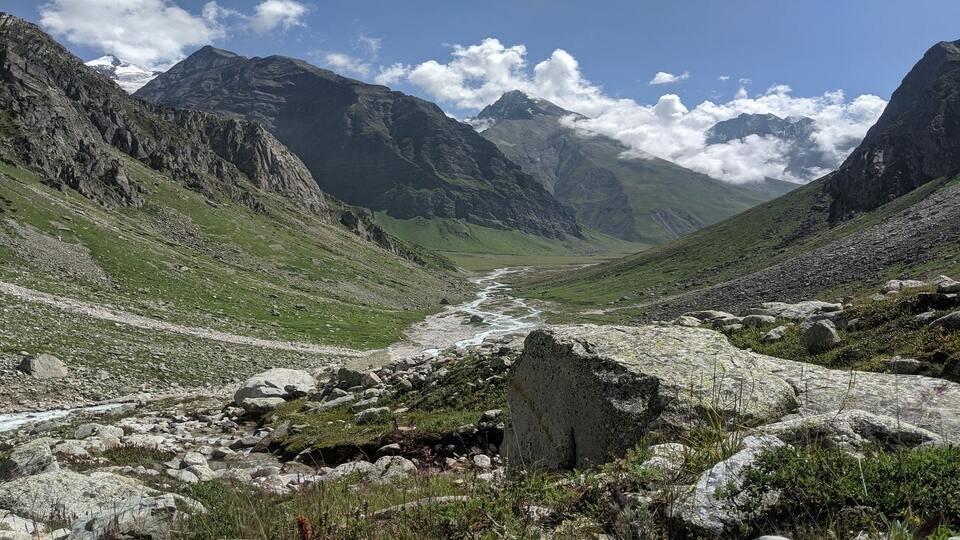

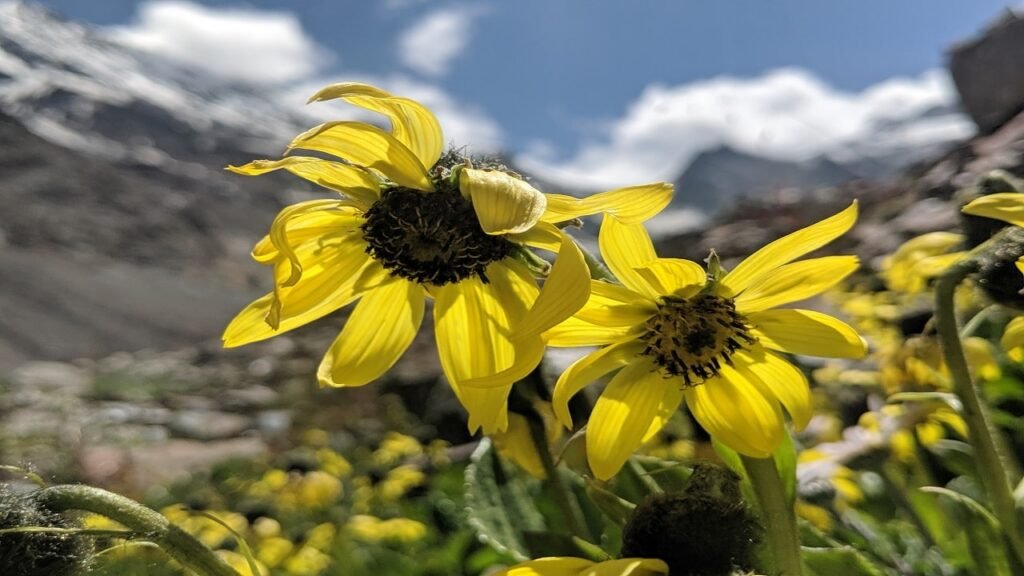

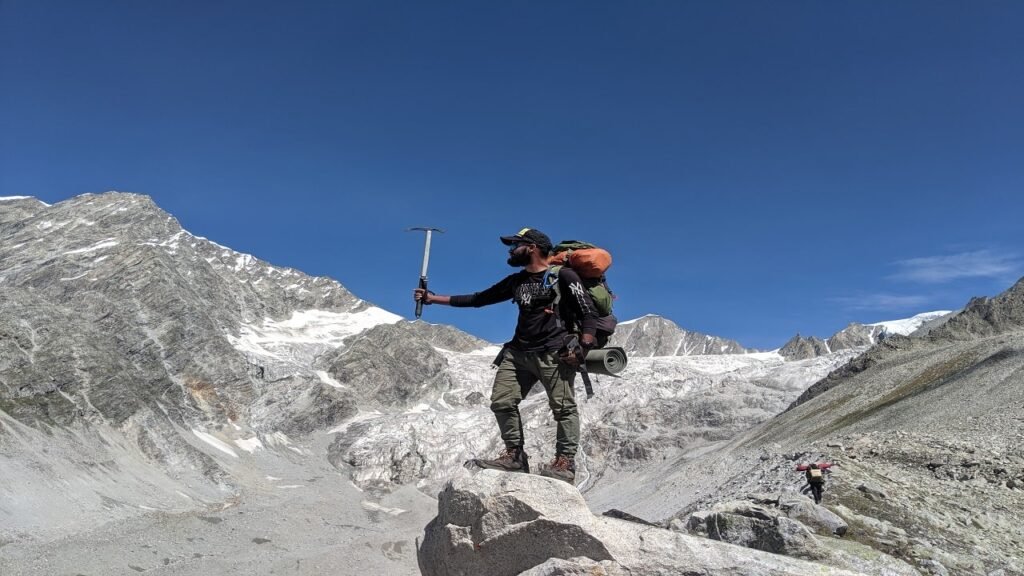
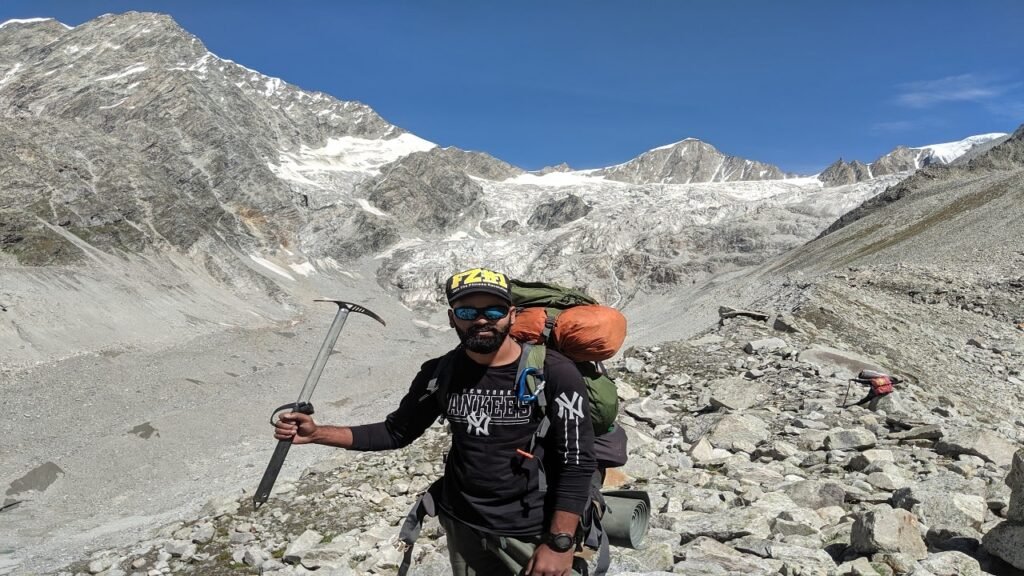
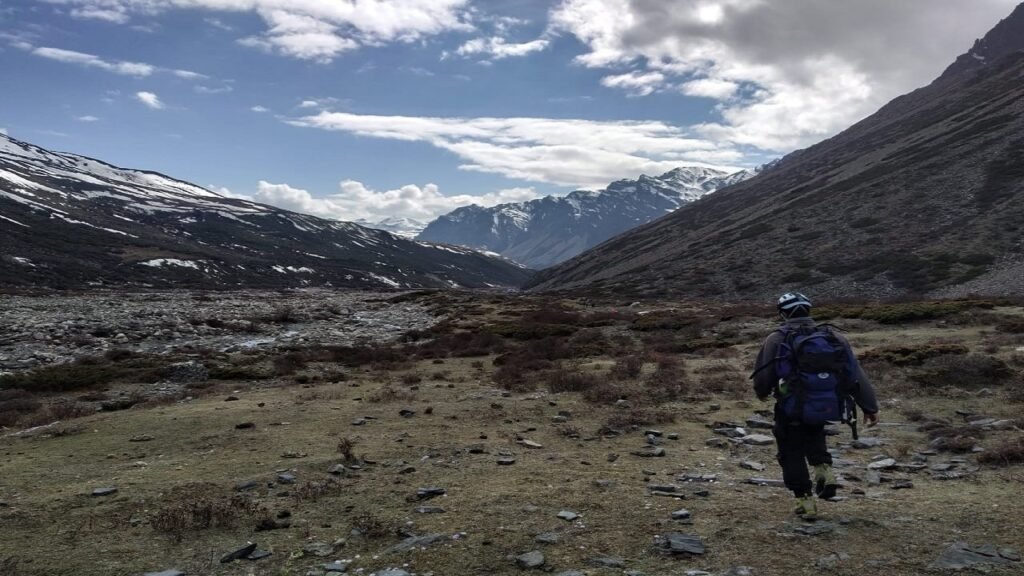



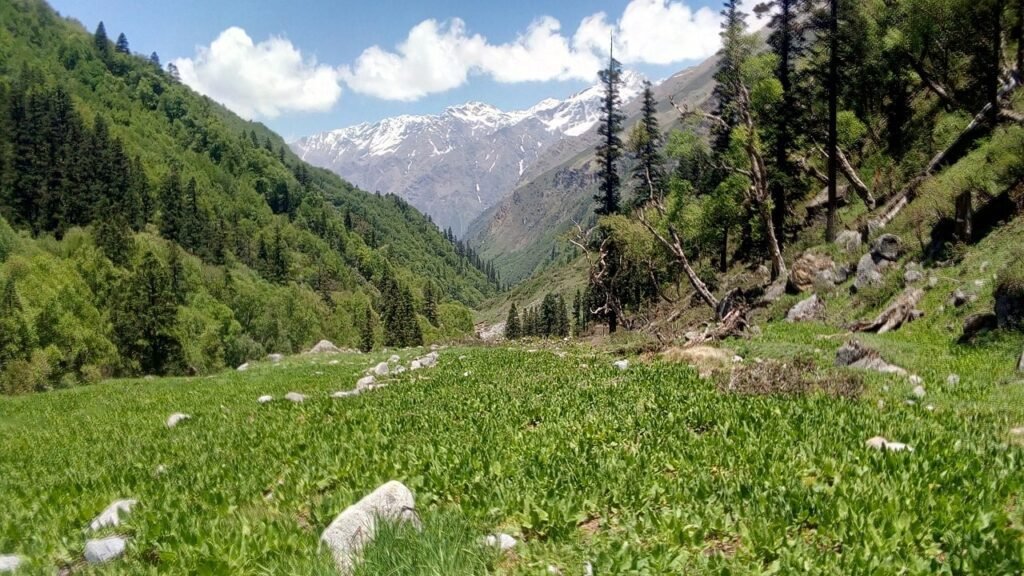
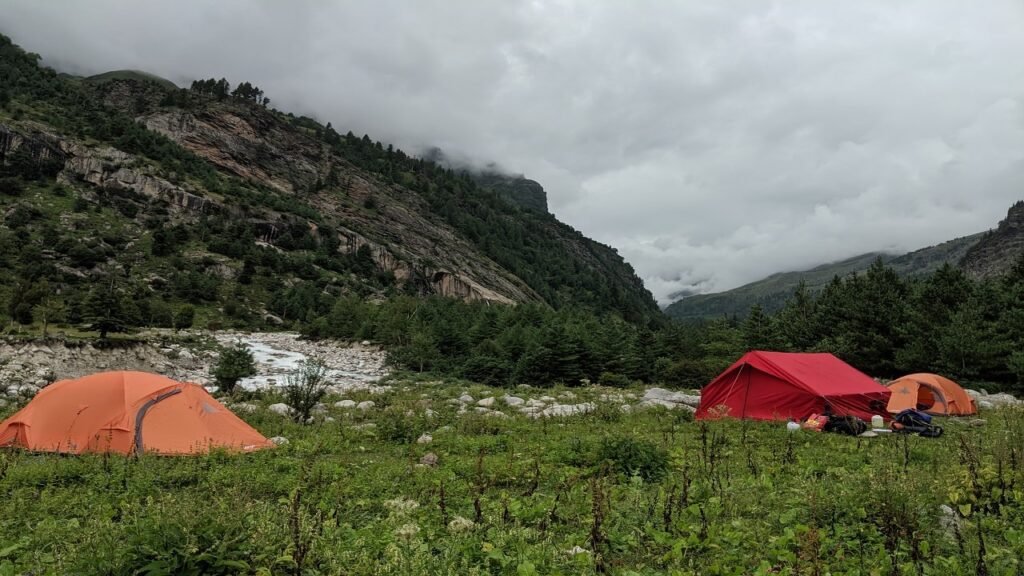
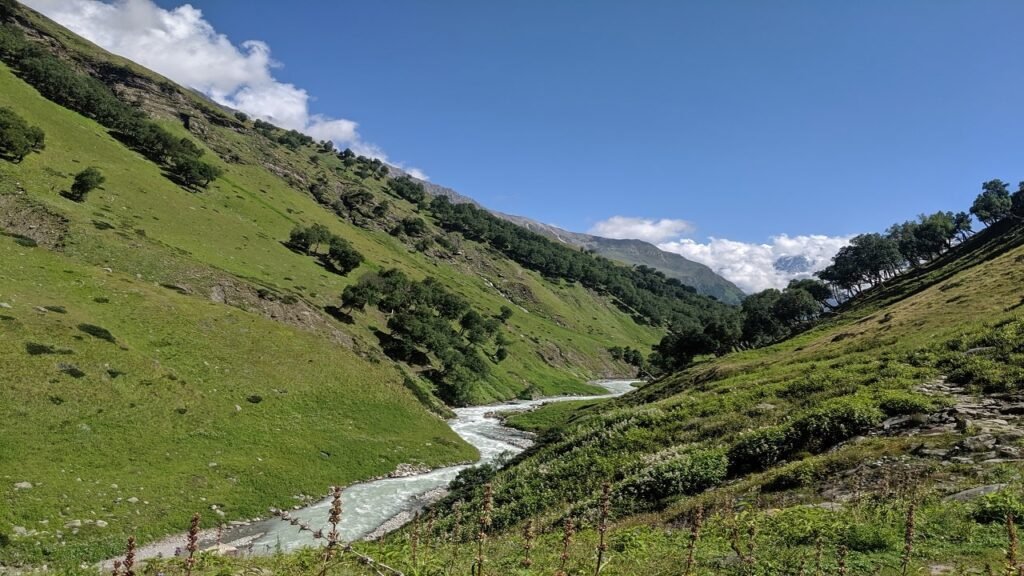
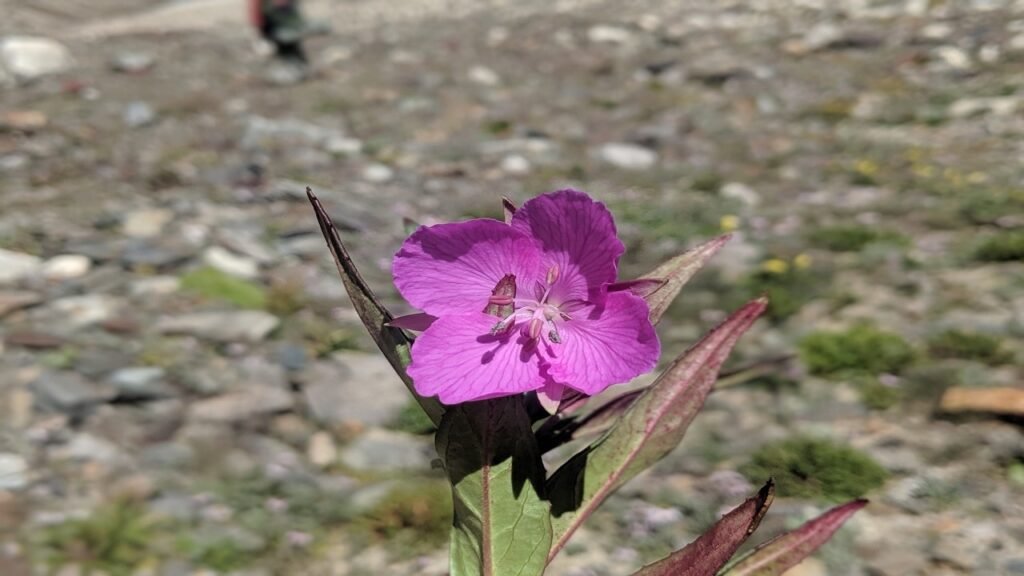

Map of Trail
FAQs
From Lamkhaga pass, you can enjoy breathtaking views of Mt. Srikanth, Lamkhaga peaks, and the stunning Baspa glacier.
Although there are ATMs available in Harshil, it’s worth noting that they may not always be functional due to connectivity issues. It is advisable to carry sufficient cash with you or make use of ATMs in Dehradun before your journey.
You should carry a valid identity proof, such as your Aadhar card, PAN card, or any other government-issued ID, for the trek.
The availability of charging points may be limited during the trek, so it’s recommended to carry a power bank and ensure your electronic devices are fully charged before starting the journey.
On Demand
Available Dates
Contact us for Booking
Contact us for Booking

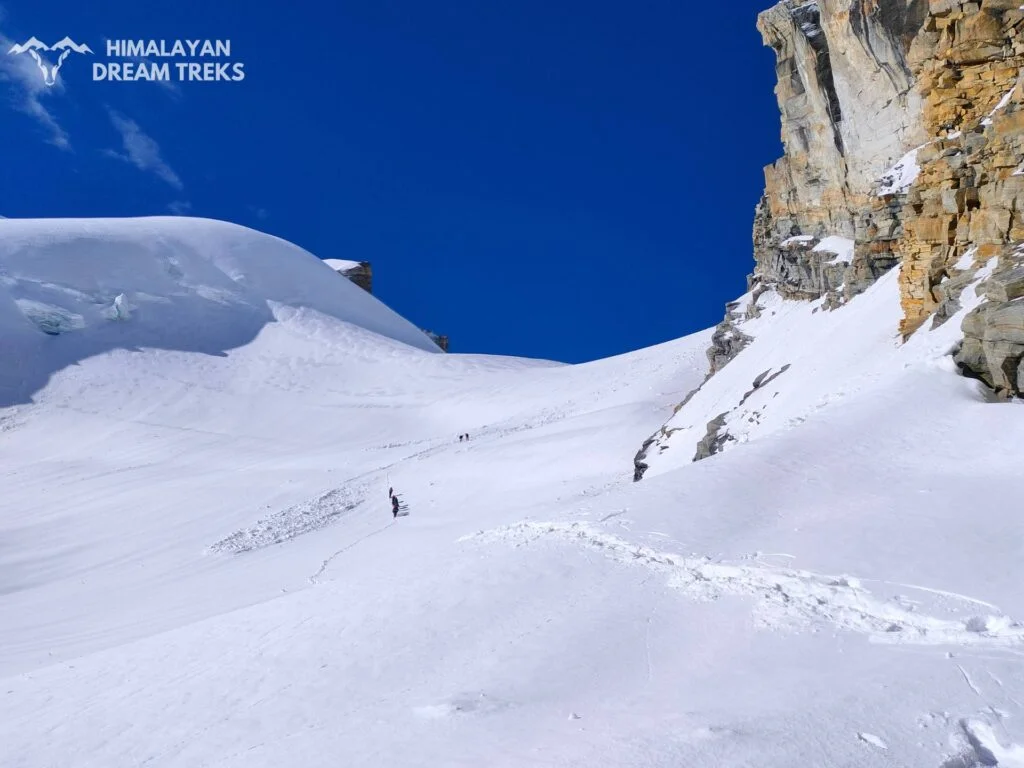
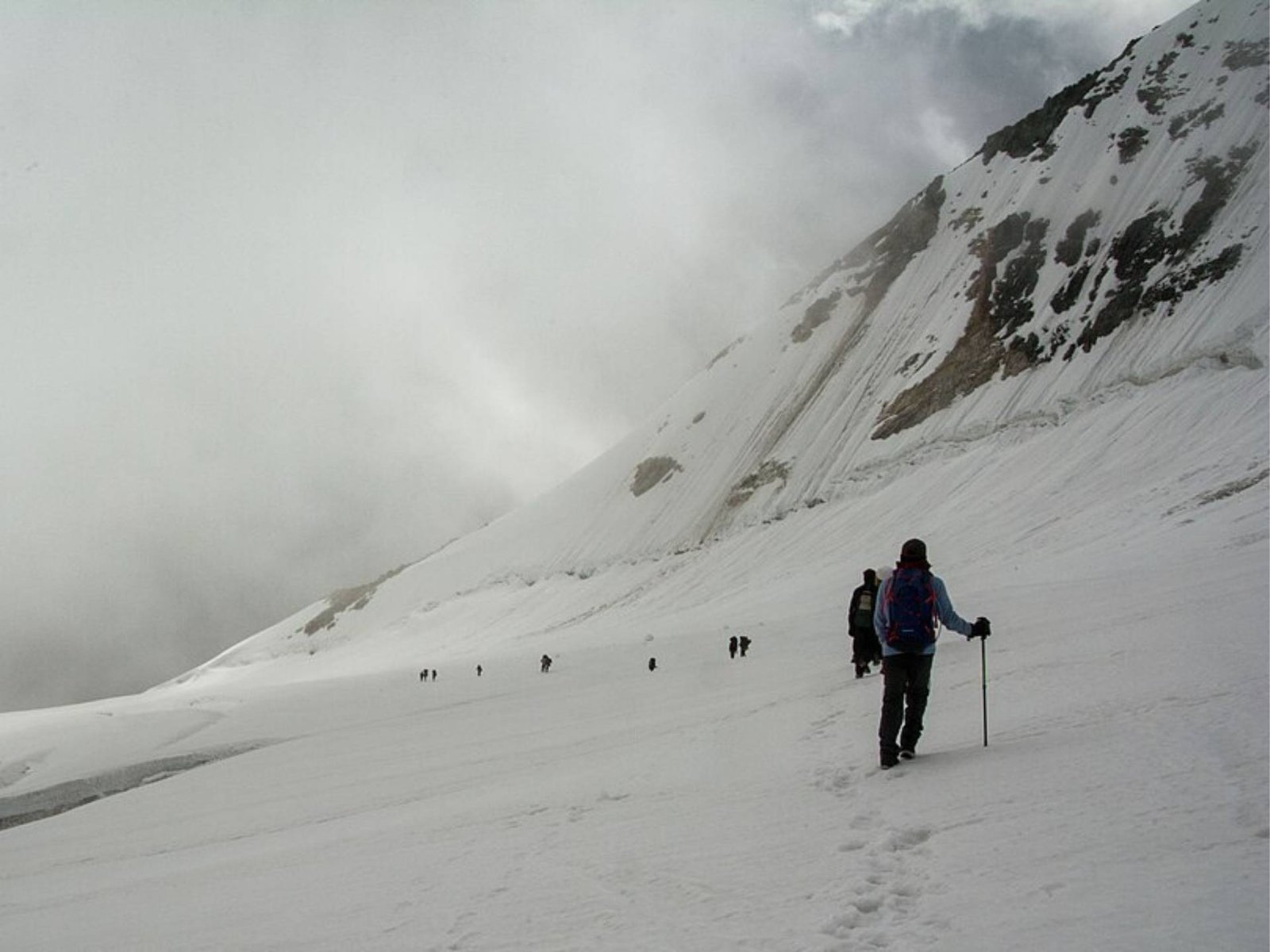
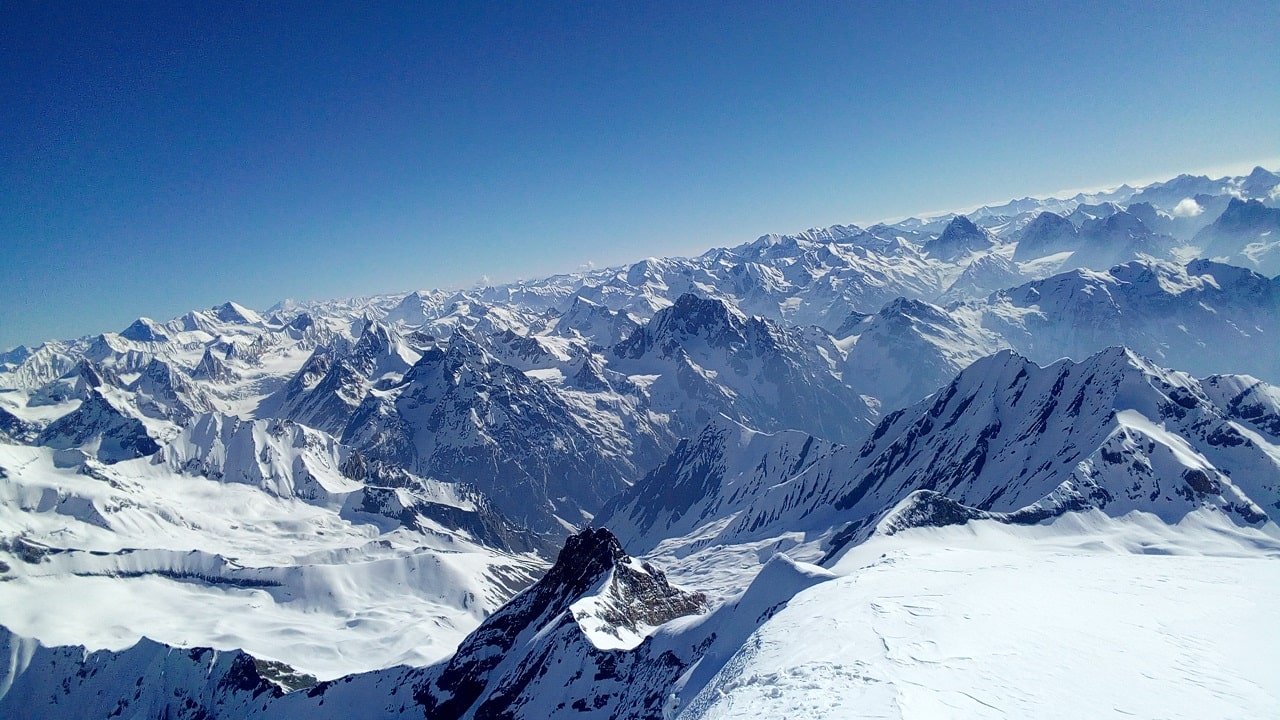

Leave a Comment